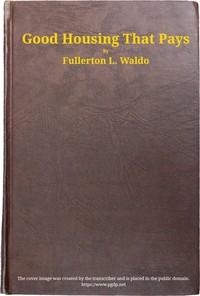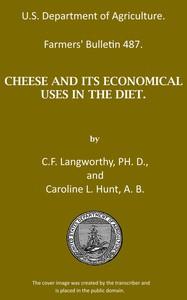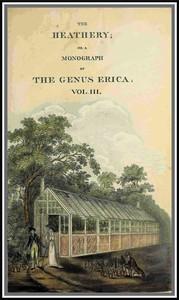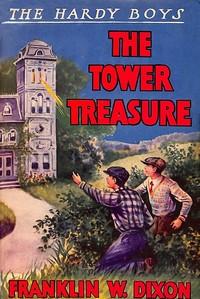|
|
Read this ebook for free! No credit card needed, absolutely nothing to pay.Words: 23546 in 9 pages
This is an ebook sharing website. You can read the uploaded ebooks for free here. No credit cards needed, nothing to pay. If you want to own a digital copy of the ebook, or want to read offline with your favorite ebook-reader, then you can choose to buy and download the ebook.

: Good housing that pays by Waldo Fullerton L Fullerton Leonard Sargent John Singer Illustrator - Working class Dwellings; Octavia Hill Association; Tenement-houses Pennsylvania Philadelphia; Housing Pennsylvania Philadelphia@FreeBooksThu 08 Jun, 2023 es reach to the playground at the rear of the houses. The central courtyard is entered by a driveway that permits of the collection of ashes and garbage without littering the sidewalk in front of the houses. An easy question is, why couldn't these houses have front verandahs on both stories? The equally easy answer is that such verandahs add to the first cost and to the subsequent rental. There are balconies at the rear. Work was begun in the summer of 1915, and in December the houses were completed and occupied. The work was done under Mr. Feld's daily supervision, and done well, without a general contract. Thus a substantial saving was effected, and the construction is abreast of the standard set in work carried out on the usual plan. In each case a tenant was ready for the house when it was ready for him. The rental is .50 per month for an apartment of two rooms and bath, with a pantry having wash-tubs and a range in one of the rooms. Each of the two families in an apartment house has a partitioned share of the cellar. An apartment of two rooms, kitchen and bath is to be had for .50. The rental is .50 for the one family houses, which give the tenant five rooms, with bath and furnace. There is at all times a waiting-list for these eminently delightful and desirable little homes close to a particularly busy center of diversified manufacturing enterprise. At the end of the eleven months to November, 1916, the rent amounted to ,517.65 out of a possible ,676,--the difference being due to the fact that periods of occupancy did not precisely overlap. After deducting expenses and interest paid on mortgages the Model Homes Company was able to show a profit of ,873.19; of this sum it set aside 0 for a depreciation account; and it paid to the Association ,400, which was a seven per cent. return on the ,000 invested by the Association. A rebate of one-half of one month's rent was made to tenants who had lived in an apartment or a house a year and done no careless damage requiring repairs. Trees were planted in the yard and before the houses, and the occupants have always evinced a lively interest in their little garden-plots. The nationality census is interesting. In the first year there were these families: Scotch, 3, German, 5, French, 2, Norwegian, 5, Swedish, 1, Italian, 1, American-born, 31 ,--a total of 48. In 1914-15 the Association shared the gratitude of certain poor families which had no work in sight for the bread-winner, by arranging with the Emergency Aid Committee to supply the necessary materials and supervision if the Committee would provide the wages of laborers and mechanics engaged in repair work on the properties. Nine men began work on this basis in February, and fifty at one time were finally employed. The work was continued until July, when funds were no longer available. In all, eighty men benefited by the arrangement: seventeen painters, eight carpenters, fifty-five laborers. From the Emergency Aid Committee ,000 was received, and was disbursed for wages, tools, car-fare and incidental expenses. Two hundred houses were completely put in order and painted, yards were repaved, fences were rebuilt, grading was done, and a vacant area was prepared for gardening purposes. Moreover, men who knew nothing of plastering or cement work learned how to do it, and thus acquired a new accomplishment of market value. They put down floors, relaid walks, whitewashed cellars, and concreted walls where dampness had exuded. Some of these men who came as utterly green hands still remain in the employ of the Association. In 1916 the Whittier Centre, with whose purposes the Association is wholly in sympathy, carried out a plan for improved housing facilities for the negro population. The Centre is organized for the study of this problem, and for practical measures devised as the outcome thereof. It formed the Whittier Centre Housing Company, with a capital of ,000, which took title to property at Dickinson and Opal Streets. The planning and construction of the first group of houses was put in the hands of the Association, and Mr. Feld supervised the building of seven two-family dwellings with apartments of three rooms and bath, at a rental of .00 and .50 a week. As an indication of the lively demand for such cleanly and attractive quarters, it should be noted that there were two hundred applications for the fourteen apartments available. That this enterprise pays is shown by the fact that in midsummer of 1917 a dividend of 5 per cent. was paid. As for houses for negro tenants owned by the Association, an interesting group will be found along Naudain Street between Seventh and Eighth, and in the vicinity. Here simple rooms may be had for a couple at the low figure of 80 cents a week, or .00 for larger rooms. The standard of self-respect and cleanliness among the tenants is high. Many of the houses were formerly dens of the lowest order, and the Association does not relax its vigil to prevent a recurrence to former conditions. In all there were, in 1917, 125 colored families in houses owned or controlled by the Association. It is probable that in the near future the Association will take over other properties west of Broad Street and south of Lombard in the district into which negroes are moving. The Association is hopeful of doing much more in the future to help the negroes find good homes. The number of houses owned by the Association at the beginning of 1917 was 179; the number of families in these houses was 244. The agency properties in charge of the Association numbered 224, and there were 460 families housed in them. This gives a total of 704 families in 403 dwellings. Agency properties have been handled by the Association, to the expressed satisfaction of owners, since it was in the second year of its existence. Free books android app tbrJar TBR JAR Read Free books online gutenberg More posts by @FreeBooks
: Cheese and its economical uses in the diet by Hunt Caroline Louisa Langworthy C F Charles Ford - Cheese; Cooking (Cheese); Cookbooks@FreeBooksThu 08 Jun, 2023

: Twenty years a fakir by Weldon S James - Weldon S. James; Door-to-door selling; Peddling@FreeBooksThu 08 Jun, 2023
|
Terms of Use Stock Market News! © gutenberg.org.in2025 All Rights reserved.






